Saab SK 60 times three! The first: SK 60A / 60072 from the Air Force F5 flying school Ljungbyhed and a brief outline of the type's operational history.
Some time ago I had the wonderful opportunity to build three of the newly launched Saab SK 60s from the Swedish manufacturer Pilot-Replicas in parallel. As each individual model in this series has its own special features that are worth mentioning and has also proved to be photographically appealing in different ways, I will be presenting the three SK 60s in three separate articles. There is enough to know about this fascinating aircraft type so that I can focus on each individual model in the presentation: I will start with the Saab SK 60A- 60072 from the Swedish Air Force F5 flying school in Ljungbyhed. It provides the essential points on the development and use of the Saab SK 60.
The following article, which will present the model of the Saab SK60 A/ 60043, will deal with the history of the F5 Ljungbyhed training squadron against the background of the formation of the Swedish Air Force. The final article will be about a Saab SK 60B /60038, the 3rd squadron "Urban Gul" of the F21 squadron in Lulea. Finally, in the accompanying text I would like to talk about the peculiarities of the kit and my experiences regarding the building process.
About the Saab SK 60/ Saab 105
The number of fighter aircraft that began their career as business jets will be quite small. However, the Saab SK 60 took exactly this route: The Swedish defence manufacturer Saab (Svenska Aeroplan Aktiebolaget) tried to sound out a potential customer base in the mid-1950s with the innovative concept of a four-seater business jet with a turbine engine. Designed from 1958 under the internal project designation 220 as a four-seater with pilots arranged side by side, the new design was intended to take its owners to their destination in the high subsonic range - a forward-looking idea that was apparently born too early: private demand failed to materialise, but the Swedish military recognised the aircraft's potential.
The first flight on 29 June 1963 and the subsequent testing of the two prototypes took place under the aegis of the Swedish Air Force, which had ordered 130 of the new jet trainer from paper in 1962, then a rounded-up 150. The aircraft were to be used primarily for pilot training and as a liaison aircraft, with use as a light combat aircraft coming later. It is interesting to note that the two ejection seats on all variants could be replaced with four civilian airliner seats.
A number of operational roles quickly emerged that went beyond the original use as a trainer. The SK 60C, for example, was a reconnaissance variant with side and ground-view cameras installed in the newly moulded nose, while the SK 60B was fitted with external load carriers for 30mm cannon containers, drop weapons or unguided rockets. Finally, the SK60D and E were liaison aircraft equipped with four seats or were used for VIP transport. The basic version, represented here in the model, was given the designation SK60A.
Two Turboméca-Aubisque turboshaft engines with 742kp thrust, manufactured under licence under the designation RM-9, were installed. In an upgrade carried out from 1995, all Swedish Saab SK60s received two more powerful Williams FJ 44-1C engines. With both engines, a speed of around 970 km/h was possible at sea level, and the range - with additional tanks - was an impressive 2770 kilometres. The dimensions are also interesting in order to get an accurate picture of the agile jet: from nose to tail, an SK60 measures 10.50 metres, with a wingspan of 9.50 metres. The empty weight of 2520kg rises to 6500kg at maximum load.
Although Saab had high hopes for the SK60 XT, which was optimised for export, only one customer was to be found: Austria, linked to Sweden by the status of neutrality, had decided in favour of the type known here as the Saab 105 OE at the end of the 1960s. The first of a total of 40 aircraft ordered were delivered in 1970, equipped with two GE J-85-GE-17B turbines as the export version. Here, too, the Saab can be used as a trainer and light ground attack aircraft, whereby in the following 50 years, in addition to training, passenger transport and airspace surveillance, which was important in neutral Austria, were also added.
In both Sweden and Austria, the Saab SK60/105OE will be remembered as the protagonist of numerous aerobatic displays. The compact and sleek two-seater was used by the national aerobatic teams of both countries. In Sweden this was the "Team 60", in Austria the 105 flew with the "Karo As" squadron. In the 1970s, Austrian military pilots twice became military aerobatics world champions on the Saab 105: Captain Rathgeb in 1974 and Major General Friedrich Wolf in 1979. In 2020, fifty years after its introduction, the last Saab 105s were decommissioned in Austria. In Sweden, however, the type will continue to fly until 2025 after a thorough overhaul.
I refer all those interested in the Pilot Replica kit or the building process to the building diary on scalemates or to the following articles on the two other Saab SK 60s that were built in parallel as a triplet. Thank you for your interest and for reading!

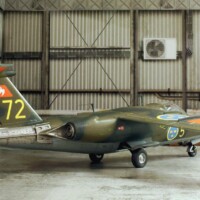
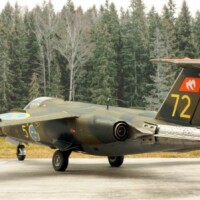
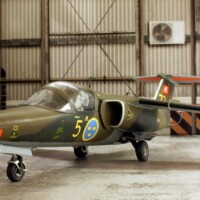
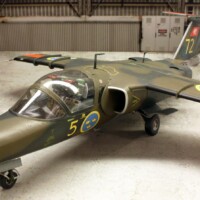
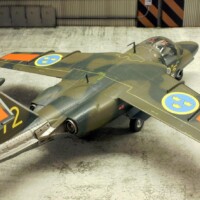
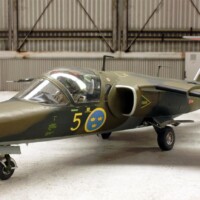
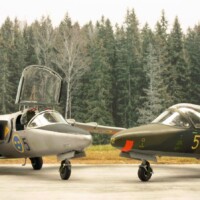
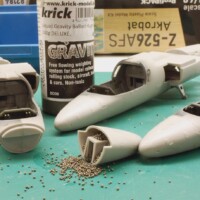
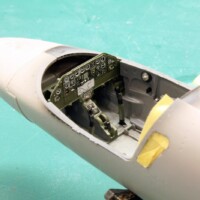
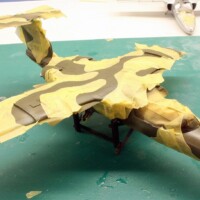
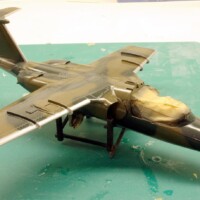

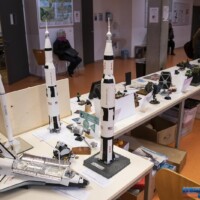
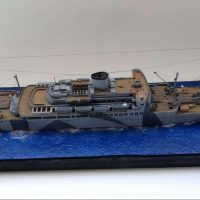
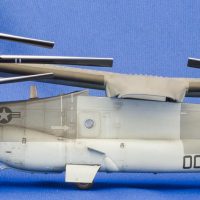
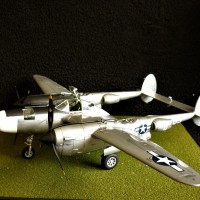
Fantastic job and awesome write up, Roland!
Thank you for your comment, Spiros
OK, Roland (@rosachsenhofer), this is just cool. Cool model and cool article. Well done.
Well, I am very pleased! Thanks for the feedback 🙂
Great job, Roland
Thank you Gary!
Great work on these. That’s a kit that I wish I had picked up when it was available.
John, thanks for the comment. I will have a look around to see if I can still get hold of this kit.
The Swedes always produce beautiful aircraft and your builds clearly show that, Roland @rosachsenhofer
Love the article as well.
John, after building the J29 Tunnan, the Saab Lansen and this SK60, I absolutely agree with your judgement. Thank you for your words!
Nice model of a very versatile aircraft.
Thank you George!
I loved the shape of this jet when I first encountered it, and secured a 1/72 Marivox kit of the 105. Does this vendor produce a 1/72 version? Yours look great, and a nice article with the history. Well done!
Thank you Greg!
I'm afraid not. I'm sending the link to the Pilot Replicas homepage: he has a very interesting selection of small and really fine kits if you want to get an overview yourself.
https://pilot-replicas.myshopify.com/
My gosh, Roland (@rosachsenhofer), a fine looking model of an aircraft not seen too often.
Your hanger photos look so real!
That makes me very happy indeed! Thank you for this positive feedback, George!
This is a beautiful build and excellent presentation. Great work!